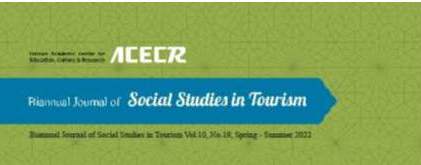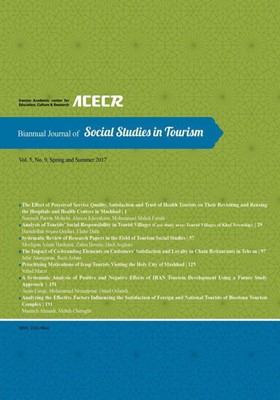-
-
List of Articles
-
Open Access Article
1 - The Effect of Perceived Service Quality, Satisfaction and Trust of Health Tourists on Their Revisiting and Reusing the Hospitals and
-
Open Access Article
2 - Analysis of Tourists’ Social Responsibility in Tourist Villages (Case study area: Tourist Villages of Khaf Township)
Hamdollah Sojasi Qeidari -
Open Access Article
3 - Systematic Review of Research Papers in the Field of Tourism Social Studies
Mozhgan Azimi Hashemi zahra bostan -
Open Access Article
4 - The Impact of Co-branding Elements on Customers’ Satisfaction and Loyalty in Chain Restaurants in Tehran
Jafar Ahangaran رضا اصلاني -
Open Access Article
5 - Prioritizing Motivations of Iraqi Tourists Visiting the Holy City of Mashhad
-
Open Access Article
6 - A Systematic Analysis of Positive and Negative Effects of IRAN Tourism Development Using a Future Study Approach
Amin Faraji Molaei Mohammad -
Open Access Article
7 - Analyzing the Effective Factors Influencing the Satisfaction of Foreign and National Tourists of Bisotoun Tourism Complex
-
The rights to this website are owned by the Raimag Press Management System.
Copyright © 2017-2025







